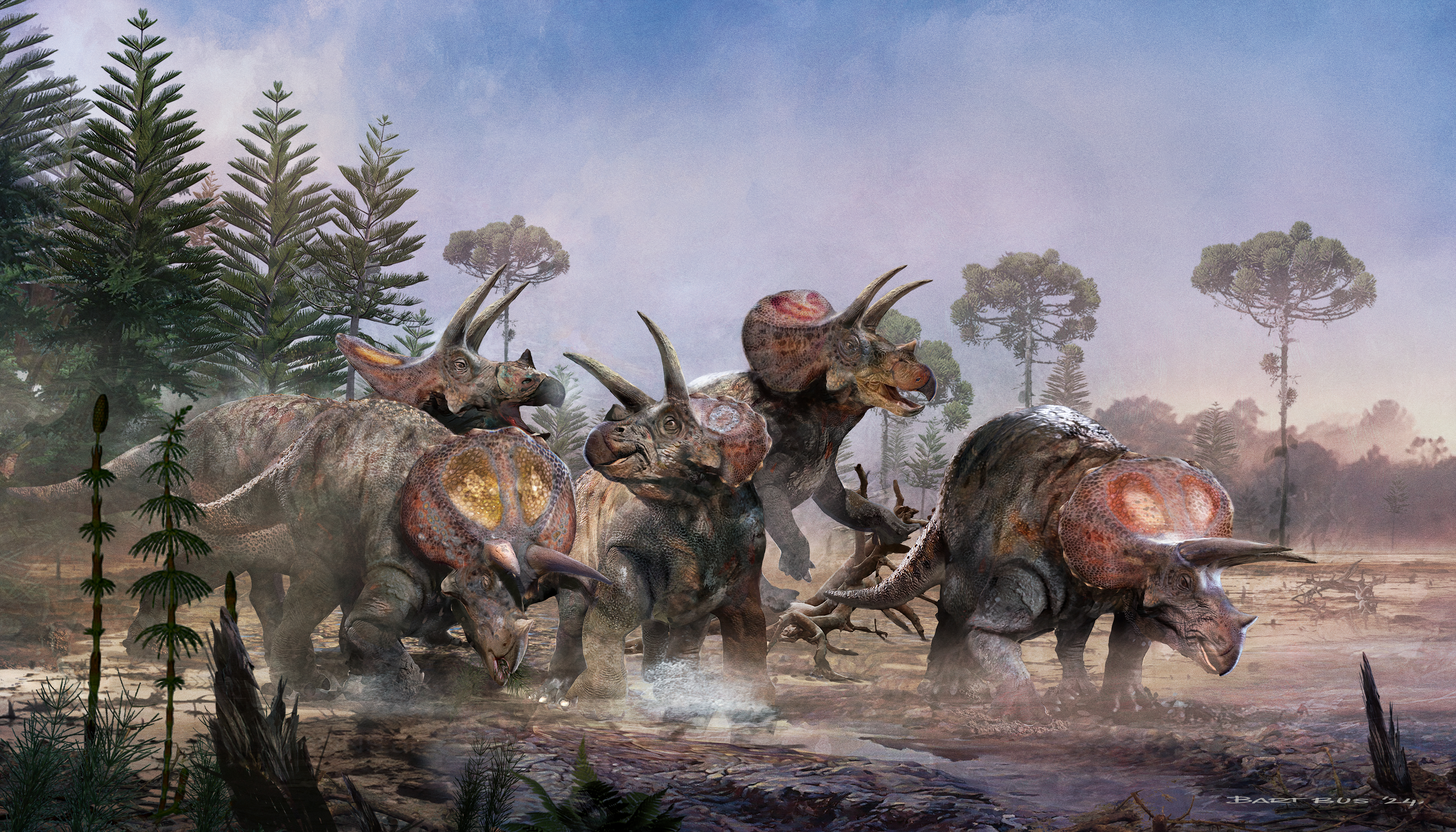Fierce but Friendly, These Fossil Triceratops Stuck Together
Posted on Categories Discover Magazine

With their huge horns and their spike-spotted frills, triceratops weren’t the world’s friendliest-looking dinosaurs. But over a decade of digging at a fossil-laden bonebed in Wyoming has found a troop of five fossilized triceratops that lived and died together, supporting the long-standing suspicion that these dinosaurs were friendlier than they looked.
The find serves as some of the strongest fossil evidence that these horned dinosaurs traveled in herds — a survival strategy potentially as potent as their horns and their frills. Announced this spring in a shared statement from the Netherlands’ Naturalis Biodiversity Center and Utrecht University, the discovery adds depth to our understanding of the lives and deaths of these ferocious herbivores.
Read More: Did Dinosaurs Get Diseases?
A Horned Herd
Throughout the decades, heaps of dinosaurs have been shown to have traveled in herds. In 2021, researchers reported a stash of hundreds of Mussaurus fossils from as far back as around 200 million years ago, assembled together and arranged according to age. Their “age segregation” signaled their sophisticated social structure. And while bonebeds with ankylosaurs, hadrosaurs, and sauropods have hinted at herd behavior, so, too, have deposited dino tracks, suggesting some dinosaurs had a distinct social streak.
Flocking together was a helpful habit for herbivores, decreasing the dangers posed by predators. But there are a few famous dinosaur herbivores for which few indications of herding have been found, including the triceratops. In fact, while fossils of other dinosaurs from the Ceratopia clade have been found in gaggles numbering in the thousands, only a few triceratops fossils have been found grouped together, despite their typical depiction as a herd animal.
With limited evidence of triceratops tribes to work off of, the team that found the triceratops in Wyoming had little idea of what they would find. Setting out in the summer of 2013, the professional and volunteer paleontologists were seeking tyrannosaur specimens when they stumbled across the first signs of their horned herd — the largest triceratops find of all time, according to the Naturalis and Utrecht University statement.
Buried in the same bonebed with similarities in the chemical and physical composition of their teeth, the fossils suggest that the triceratops stuck together, at least for a little while. “That, of course, leads to all kinds of new questions,” said Jimmy de Rooij, a Utrecht University student and paleontology researcher recruited to analyze the fossils, in a statement. “How complex was this social behavior, exactly?”
Read More: How Did Dinosaurs Have Sex, Anyway?
Fossilized Friendships
Containing fossils from five individuals, the find consisted of some 1,200 bones and bone fragments. “The material is of very good quality,” de Rooij, who wrote and defended a Ph.D. dissertation about the discovery, added in the statement. “This enabled us to show that these triceratops grew really slowly, for instance.”
Deposited without the bones of other species, the bonebed suggests that the dinosaurs died side-by-side, possibly swallowed by a swamp. Analysis of their teeth shows that they lived similar lifestyles, likely together, before dying some 67 million years ago.
Read More: How Do Scientists Reconstruct What Dinosaurs Looked Like?
Article Sources:
Our writers at Discovermagazine.com use peer-reviewed studies and high-quality sources for our articles, and our editors review them for accuracy and trustworthiness. Review the sources used below for this article: